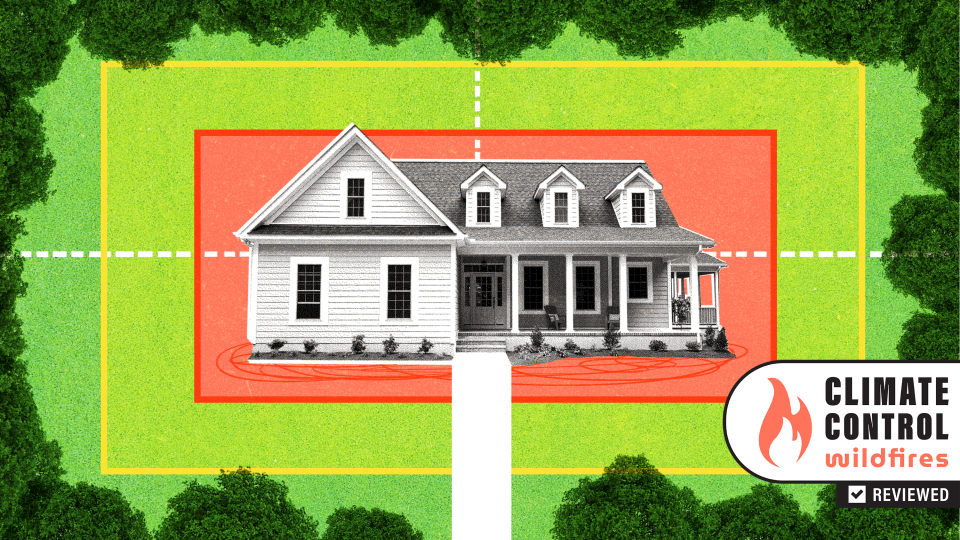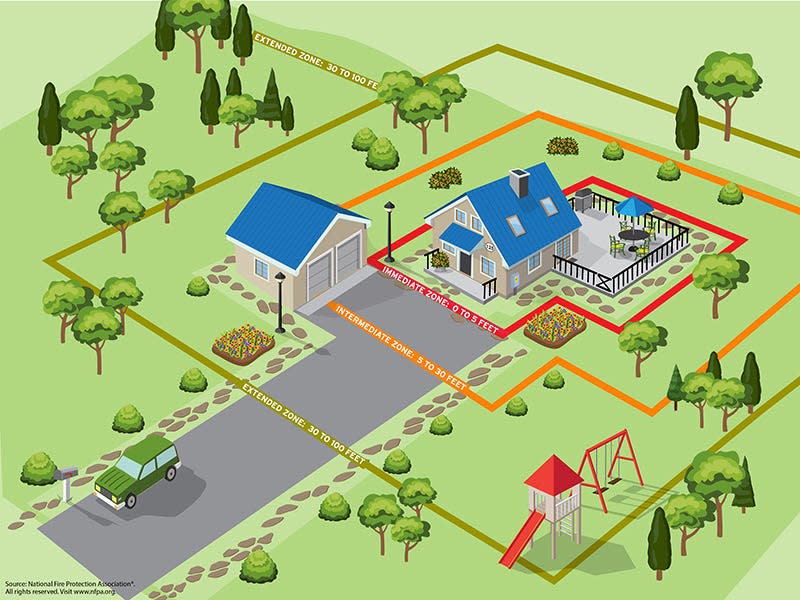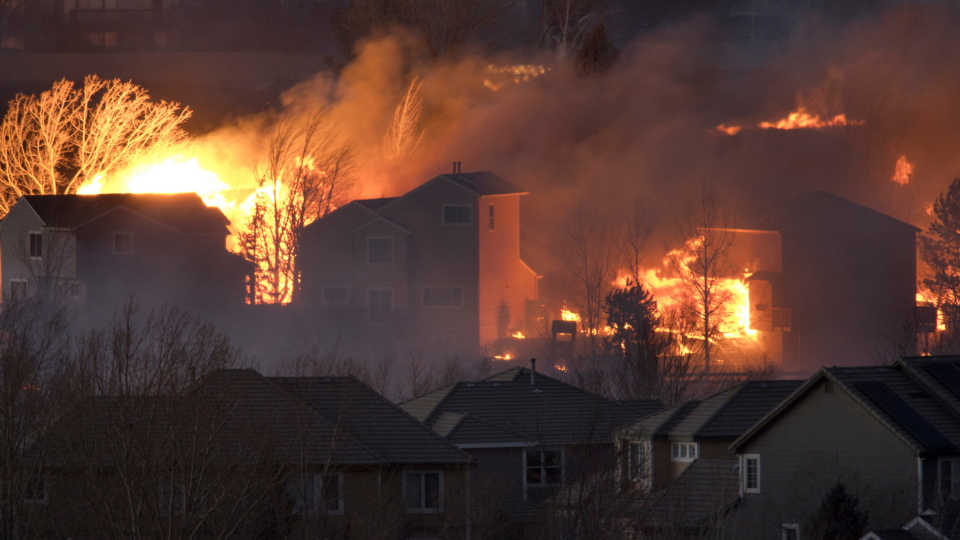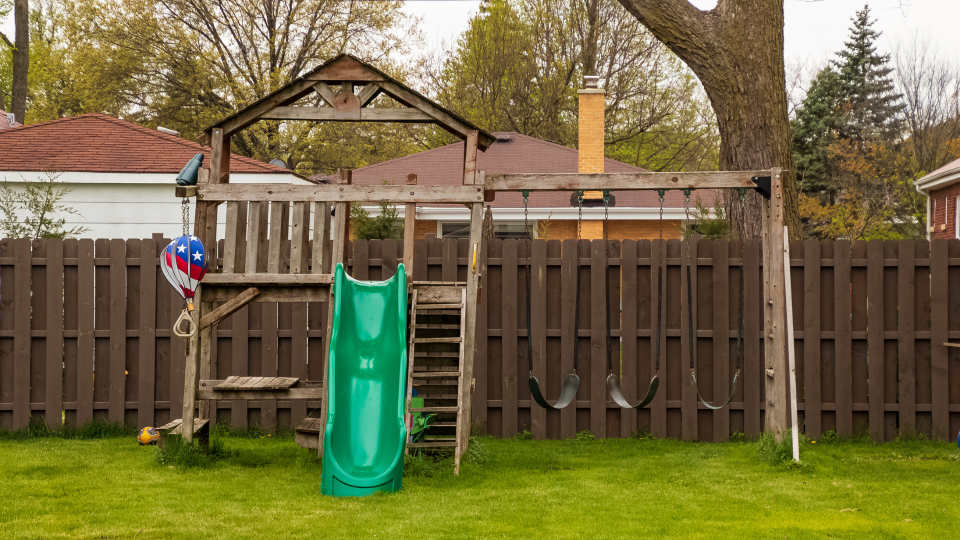Use the Home Ignition Zone technique to reduce wildfire risk with these tips from the NFPA

— Recommendations are independently chosen by Reviewed’s editors. Purchases you make through our links may earn us a commission.
As the high season for wildfires—roughly May through October—approaches it’s good practice to consider how to keep your home and belongings safe in the event of a fire.
Get deals and shopping advice delivered straight to your phone. Sign up for text message alerts from the experts at Reviewed.
It’s all about familiarizing yourself with one of the most important phrases in wildfire safety: the Home Ignition Zone.
►Check out the entire Climate Control series by the product experts at Reviewed to protect your home from the effects of climate change
So, what is the Home Ignition Zone?

The Home Ignition Zone is the term for the area from zero to 200 feet around the outside of a house and is also referred to as a building’s defensible space, meaning that it’s a buffer that you can help to create and maintain between your home and a potential fire. (In layman’s terms? We’re talking about your yard.)
The Home Ignition Zone is subdivided into three sections, the Immediate Zone, the Intermediate Zone, and the Extended Zone. The names of these zones can change depending on the source. FEMA simply calls them Zone 1, Zone 2, and Zone 3. For the sake of this article, we are referring to the names given by the National Fire Prevention Association (NFPA).
How do wildfires spread?

Here’s a primer on how wildfires spread and why this defensible space and these zones are so important.
There are three primary ways that a home can be exposed to a wildfire: embers, which are burning pieces of vegetation or debris that can travel through the air; radiant heat, which is heat given off by burning materials that’s great enough to ignite something else; and flame impingement, which is essentially an object’s direct exposure to fire.
While all three are dangerous, radiant heat and flame impingement require closer proximity to fire.
Embers can be carried on the wind and can travel up to a mile from the center of a fire, making it all the more important to prepare your Home Ignition Zone and make it inhospitable to fire by reducing the presence of fine fuels (such as leaves, vegetation, or piles of firewood) or entry points into your home.
The Immediate Zone, aka the non-combustible zone
When preparing for a wildfire, the Immediate Zone is the first place you should prep. This is the area that’s zero to 5 feet from a building perimeter.
The Insurance Institute for Business and Home Safety states, “The objective of this zone is to reduce the chance that ignition will occur near the home and result in a direct flame contact exposure to the building.”
Sometimes called the non-combustible zone, this area is the most crucial part of your home to secure and turn into a defensible space against wildfires.
Important steps to take include removing any debris, such as leaves, sticks, and other organic yard waste from gutters, remove or relocate vegetation and landscaping that directly touches your home, fix any shingles or roof tiles that create openings where embers can enter the home, and install ⅛-inch metal mesh screening behind vents, eaves, or other means of home ventilation where embers can be pulled in.
The Intermediate Zone, home to fuel breaks

The second area of the Home Ignition Zone is the Intermediate Zone, which extends from 5 feet to 30 feet from the home. This portion of your yard is typically where you landscape, entertain, and install play structures, so it’s important to be mindful of the materials you use and their proximity to your home.
The goal in this space is to slow down and reduce the energy of the wildfire in the hopes that it won’t reach the home itself.
In the Intermediate Zone, you should create fuel breaks, which are strips or patches of vegetation that are designed to slow the spread of fire. Fuel breaks can be created by using gravel or rock mulch instead of wood chips in your landscaping, installing hardscaping and driveways to break up other forms of vegetation, and keeping trees pruned and well spaced (at least 18 feet is recommended between tall trees).
It’s important to note that any plant or vegetation in your yard can become combustible if it dries out or isn’t cared for properly, but there are certain kinds of plants that are less of a hazard than others if they’re well kept, including plants with higher moisture content in their leaves, and deciduous trees like oak and maple, which retain more moisture than coniferous trees like fir, pine, and juniper.
If you know that you’re at risk for a wildfire and you have the time to do so, moving any types of combustibles like wooden or wicker furniture, wood piles, or any other fine fuels from this area is a good idea.
The Extended Zone, where flames are smaller
The Extended Zone is the area from 30 feet to 100 feet (or 200 feet, depending on your property size) out from the home.
The NFPA states that in this area, “the goal is not to eliminate fire, but to interrupt fire’s path and keep flames smaller and on the ground.”
As with the Intermediate Zone, it’s important to keep any vegetation or tree growth tidy and remove any dry and dead organic matter from the area, including leaves, branches, and plants. Removing vegetation that’s adjacent to sheds, gazebos, or other outbuildings can also help keep those structures safer.
While the thought of losing your home or valuables in a wildfire can feel overwhelming, understanding the Home Ignition Zone and the ways that you can reduce the threat of fire encroaching on your home is crucial. Though these zones are all outside your actual home, maintaining them just might be the way to ensure that what’s inside your home stays safe.
There’s a lot more where this came from. Sign up for our weekly newsletter to get all our reviews, expert advice, deals and more.
The product experts at Reviewed have all your shopping needs covered. Follow Reviewed on Facebook, Twitter, Instagram, TikTok or Flipboard for the latest deals, product reviews and more.
Prices were accurate at the time this article was published but may change over time.
This article originally appeared on Reviewed: Home Ignition Zone: Mitigate wildfire risk with this technique
